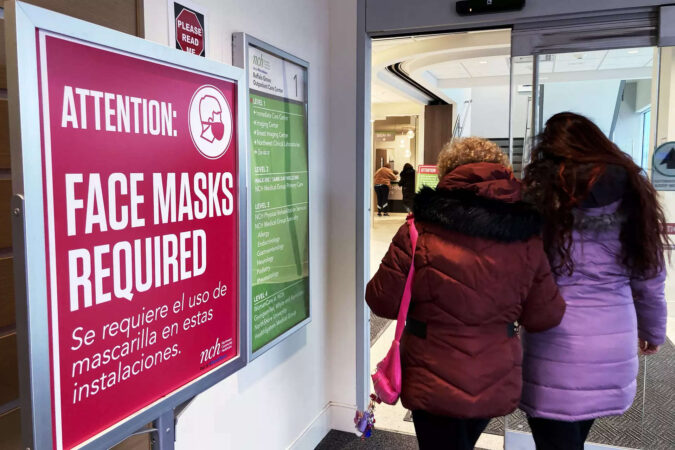Over the past four weeks, there has been an upward trend in infections, as evidenced by data collected from wastewater monitoring, rates of positive tests, hospitalizations, and visits to emergency rooms.
The Covid positivity rate in tests has climbed to 7.6%, a level last observed in November 2021, which coincided with the summer period just prior to the widespread prevalence of the delta variant.
How bad is the spike in hospitalizations?
During the week ending on July 29, there were 9,056 hospital admissions due to Covid-19. This marks an approximately 12% rise compared to the previous week.
However, these numbers are significantly lower than the peaks observed in the past. For instance, they pale in comparison to the approximately 44,000 weekly hospital admissions seen in early January, the nearly 45,000 recorded in late July 2022, or the staggering 150,000 admissions during the omicron surge in January 2022.
“While there is a slight increase, there’s no need for heightened concern at this point,” Dr David Dowdy, an infectious disease epidemiologist at the Johns Hopkins Bloomberg School of Public Health, told AP.
Is a new variant behind spike in Covid infections?
Although a certain version of the omicron variant, known as EG.5, is becoming more prevalent, no single variant of the virus currently holds a dominant position. EG.5 traces its origins to the XBB strain. While the variant has been informally named “eris,” it’s important to note that this moniker is not being utilized by scientists.
“Omicron is out there making minor variations. It’s having children, progeny, but they’re all closely related to omicron,” Dr William Schaffner, a professor of preventive medicine and infectious diseases at Vanderbilt University Medical Center, told ABC News. “They are contagious, but they are not more serious, so that’s excellent.”
When is the new vaccine coming?
This fall, officials expect to see updated Covid-19 vaccines that contain one version of the omicron strain, called XBB.1.5. It’s an important change from today’s combination shots, which mix the original coronavirus strain with last year’s most common omicron variants.
It’s not clear exactly when people can start rolling up their sleeves for what officials hope is an annual fall Covid-19 shot. Pfizer, Moderna and smaller manufacturer Novavax all are brewing doses of the XBB update but the Food and Drug Administration will have to sign off on each, and the CDC must then issue recommendations for their use. Dr Mandy Cohen, the new CDC director, said she expects people will get their Covid-19 shots where they get their flu shots — at pharmacies and at work — rather than at dedicated locations that were set up early in the pandemic as part of the emergency response. “This is going to be our first fall and winter season coming out of the public health emergency, and I think we are all recognizing that we are living with Covid, flu, and RSV,” Cohen told AP last week. “But the good news is we have more tools than ever before.”
(With inputs from agencies)
